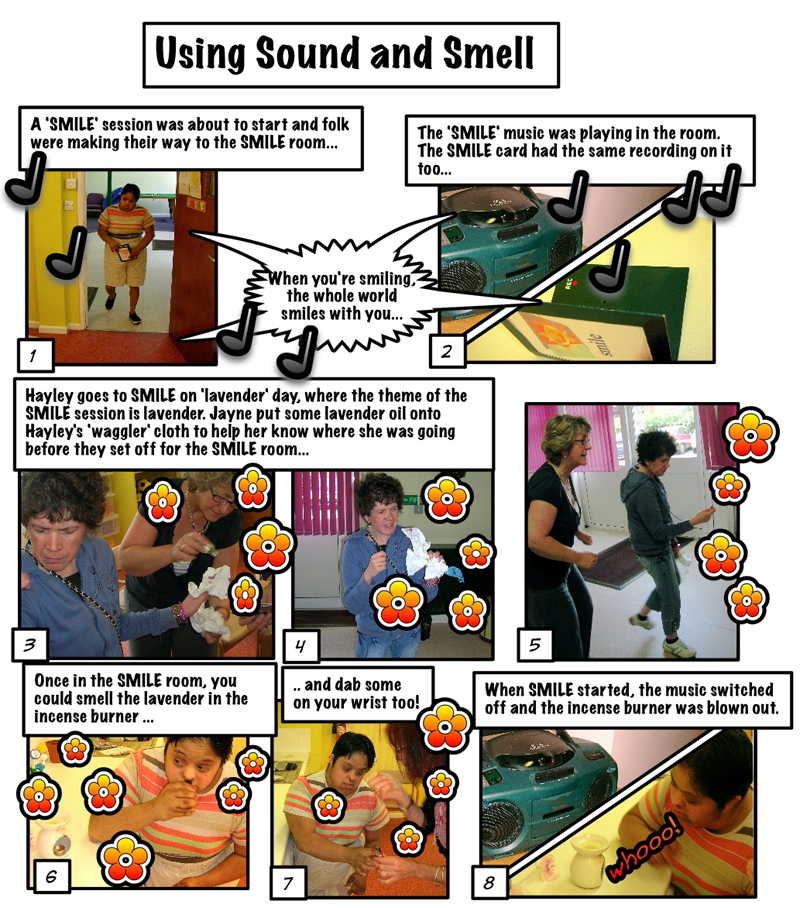Sound and smell

How is sound and smell used to communicate?
A smell, music, or something visual like a mobile or coloured lighting are all known as sensory references.
Sensory referencing is similar to using Objects of Reference (see using objects to communicate) but uses sound, visual, smell and taste as a means of orientation rather than a specific object.
Here are some examples: a swimming costume with the smell of chlorine to denote a swimming pool; a pine freshener used in the bathroom or toilet; Talcum powder to signal personal care; a flannel is used with a certain smell, such as pine, to denote going to the toilet or for a shower; specific music to denote a change of activity e.g. lunch time, talk time.
Where can sound and smell be used to communicate?
Anywhere.
In all areas of daily living.
Some of these happen naturally at certain times, e.g. ice-cream van, smell of food.
Why is sensory referencing useful?
To show someone:
- where they are
- what is going to happen next
- when it is time to leave or time for an activity to end.
Sensory references are particularly useful for users experiencing profound and multiple learning difficulties and people with a sight impairment.
Where can I learn to use sound and smell to communicate?
Tony Jones (via Pri-Liberator, www.pri-liberator.com) is the country’s leading expert and trainer on Sensory Referencing and Objects of Reference (OoR). He has devised the use of Sensory Referencing mainly for colleges. For adults with learning disability in Oxfordshire, Tony Jones’ work tends to be adapted to our needs in the community and in day centres.
Have a look at the Resource and Ideas Bank for innovative ideas by people in Oxfordshire using sound and smell to communicate.
Page last reviewed:
